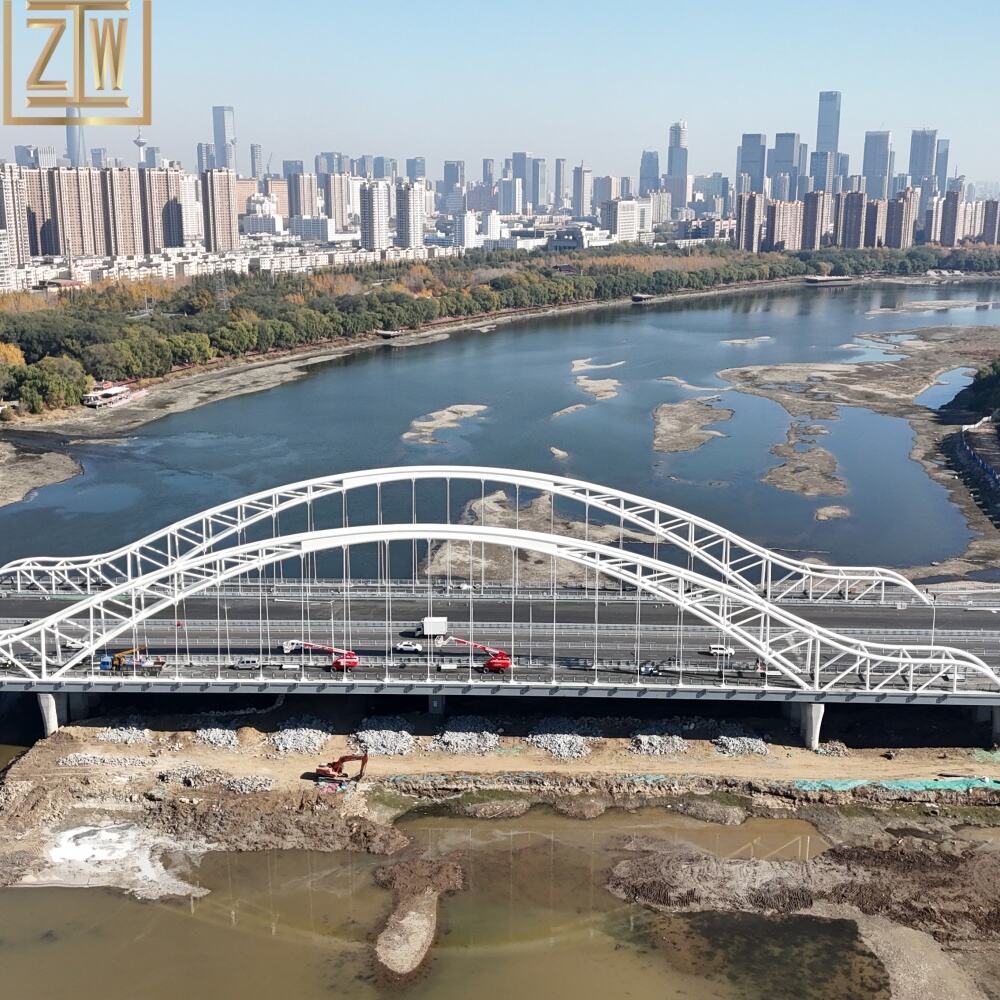In the ever - evolving landscape of urban development, steel bridges are rapidly gaining favor among city planners, and the reasons behind this preference are both compelling and multifaceted. This article aims to comprehensively dissect why these structures are not only renowned for their sturdiness but also offer significant budgetary advantages and contribute to a more sustainable urban environment. As urban areas experience continuous population growth and increasing traffic congestion, the need for robust and reliable roadways and crossings has become more pressing than ever. Steel bridges, with their inherent strength and reliability, have emerged as the ideal solution to meet the demands of modern cities.
Unrivaled Durability: The Cornerstone of Steel Bridges
The durability of steel bridges stands as their most prominent and celebrated advantage. Steel is a material that can withstand the harshest of environmental and mechanical stresses. It remains resilient in the face of heavy traffic, with countless vehicles passing over it day in and day out, subjecting it to constant vibrations and weight loads. The force of swirling winds, even during powerful storms and hurricanes, fails to compromise its structural integrity. Moreover, in coastal cities where bridges are exposed to the corrosive effects of salty sea air, steel demonstrates remarkable resistance.
In contrast to materials like wood, which is prone to rotting, insect infestation, and decay over time, and concrete, which can crack under stress or due to environmental factors such as freeze - thaw cycles, steel simply endures. A well - constructed steel bridge can serve a city for decades with only minimal maintenance requirements. For example, the Golden Gate Bridge in San Francisco, an iconic steel structure, has been standing strong since 1937. Despite being constantly battered by the strong winds and saltwater spray of the Pacific Ocean, regular inspections and minor upkeep have ensured its continued functionality. This long - lasting nature translates into substantial savings for cities in the long run, as they don't have to allocate large sums of money for frequent repairs or replacements, making steel a top choice for city planners.
Cost - Effective Solutions: Beyond Initial Investment
The cost - saving benefits of steel bridges extend far beyond their durability. While the initial cost of raw steel may seem relatively high, the long - term financial advantages are significant. The reduced need for extensive repairs and replacements over the lifespan of the bridge means that cities can allocate their budgets more efficiently. Additionally, the prefabrication of steel bridge components plays a crucial role in cost reduction.
Steel parts are manufactured off - site with high precision and arrive at the construction site ready to be assembled. This streamlined process allows construction crews to complete the assembly much faster compared to traditional building methods. For instance, in a recent urban bridge project in a major city, the use of prefabricated steel components reduced the construction time by nearly 40%. This not only cuts down on labor costs but also shortens the overall project timeline. When a new bridge opens earlier, it immediately benefits the entire community. Commuters experience reduced travel times, delivery drivers can make their rounds more efficiently, and the flow of goods and services is enhanced, all of which contribute to a more prosperous urban economy.
Environmental Friendliness: A Step Towards Sustainable Urban Growth
In an era where environmental consciousness is at the forefront of urban planning, steel bridges have emerged as a key component of greener urban development. Steel is the most recycled material in the world. Approximately 88% of all steel produced globally is recycled, and a significant portion of new steel products are made from recycled steel. This high recycling rate aligns perfectly with the growing push for eco - friendly building practices in cities.
When a city chooses steel for its bridges, it is making a sustainable choice that reduces waste and conserves natural resources. The recycling process of steel requires far less energy compared to producing steel from raw materials, thereby reducing the carbon footprint associated with bridge construction. For example, a medium - sized steel bridge can potentially reuse thousands of tons of recycled steel, saving the equivalent energy of powering hundreds of homes for a year. By opting for steel bridges, cities can meet the transportation needs of their residents while also contributing to a more sustainable and environmentally friendly urban environment.
Design Flexibility: Shaping the Urban Landscape
Steel's malleability and strength offer city planners and engineers unparalleled design flexibility. It can be shaped and formed to fit almost any urban scenario, whether it's a delicate footbridge gracefully spanning over a park path, providing a serene connection for pedestrians, or a massive, imposing freeway span that carries heavy traffic across wide rivers or valleys.
This design freedom has led to the creation of numerous iconic steel bridges around the world that not only serve their practical purpose but also become landmarks of the cities they inhabit. The Sydney Harbour Bridge in Australia, with its distinctive arch design, is not only a vital transportation link but also a symbol of the city, attracting tourists from all over the globe. Steel bridges can be designed to blend harmoniously with the surrounding architecture or stand out as modern architectural marvels, adding both beauty and functionality to the urban landscape.
The Future of Steel Bridges in Urban Development
As urban populations continue to grow and the demand for intelligent, environmentally friendly infrastructure increases, the trend towards steel bridges is set to accelerate. Ongoing research and development in the field of materials science and engineering are leading to the creation of new tools and techniques that promise even stronger, more durable, and longer - lasting steel spans. These advancements will further enhance the benefits of steel bridges, making them an even more attractive option for future urban development projects.
In conclusion, steel bridges offer a multitude of benefits for urban development, from their exceptional durability and cost - effectiveness to their environmental friendliness and design flexibility. As cities strive to create sustainable, efficient, and aesthetically pleasing environments, steel bridges will undoubtedly play an increasingly important role in shaping the urban infrastructure of tomorrow.


